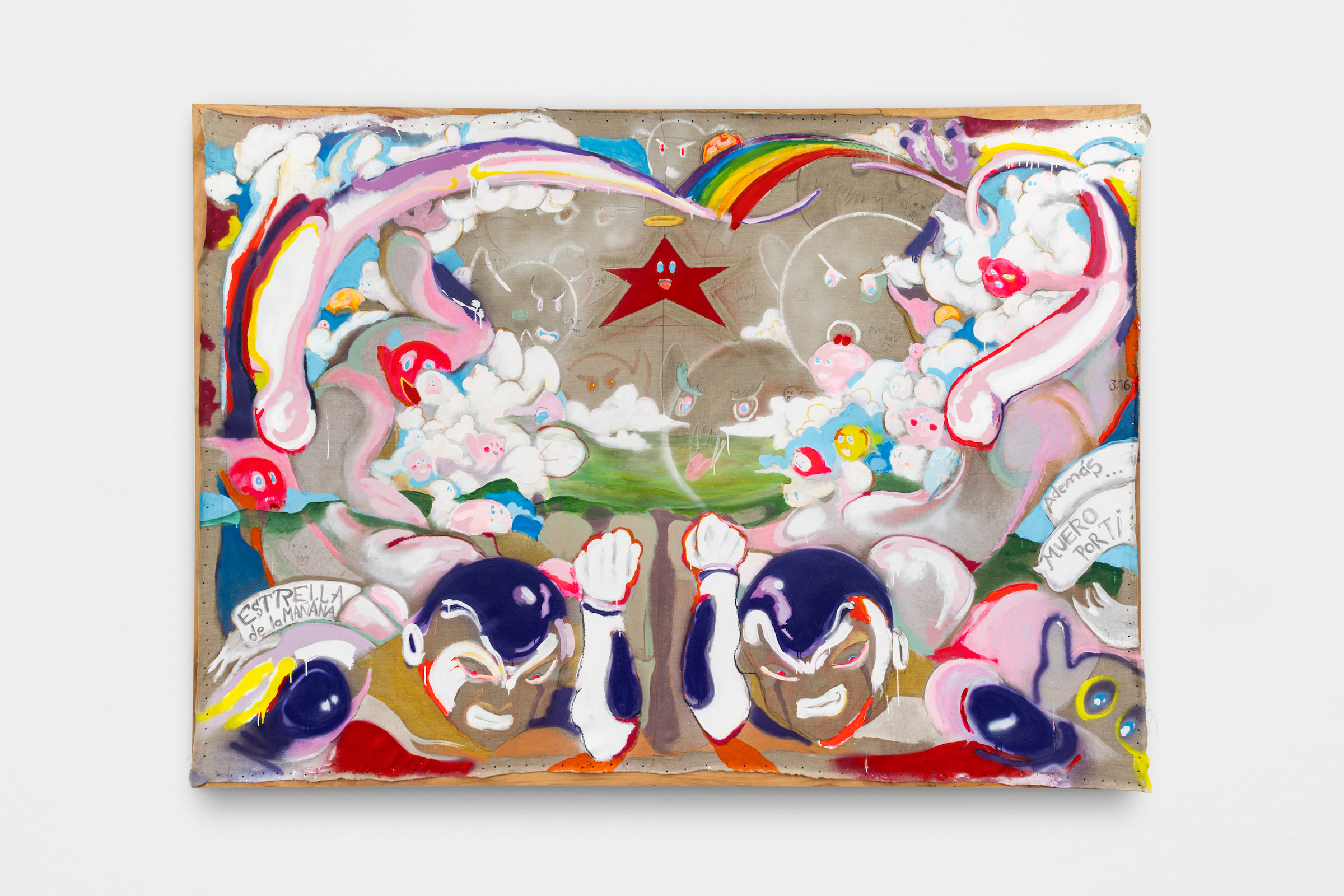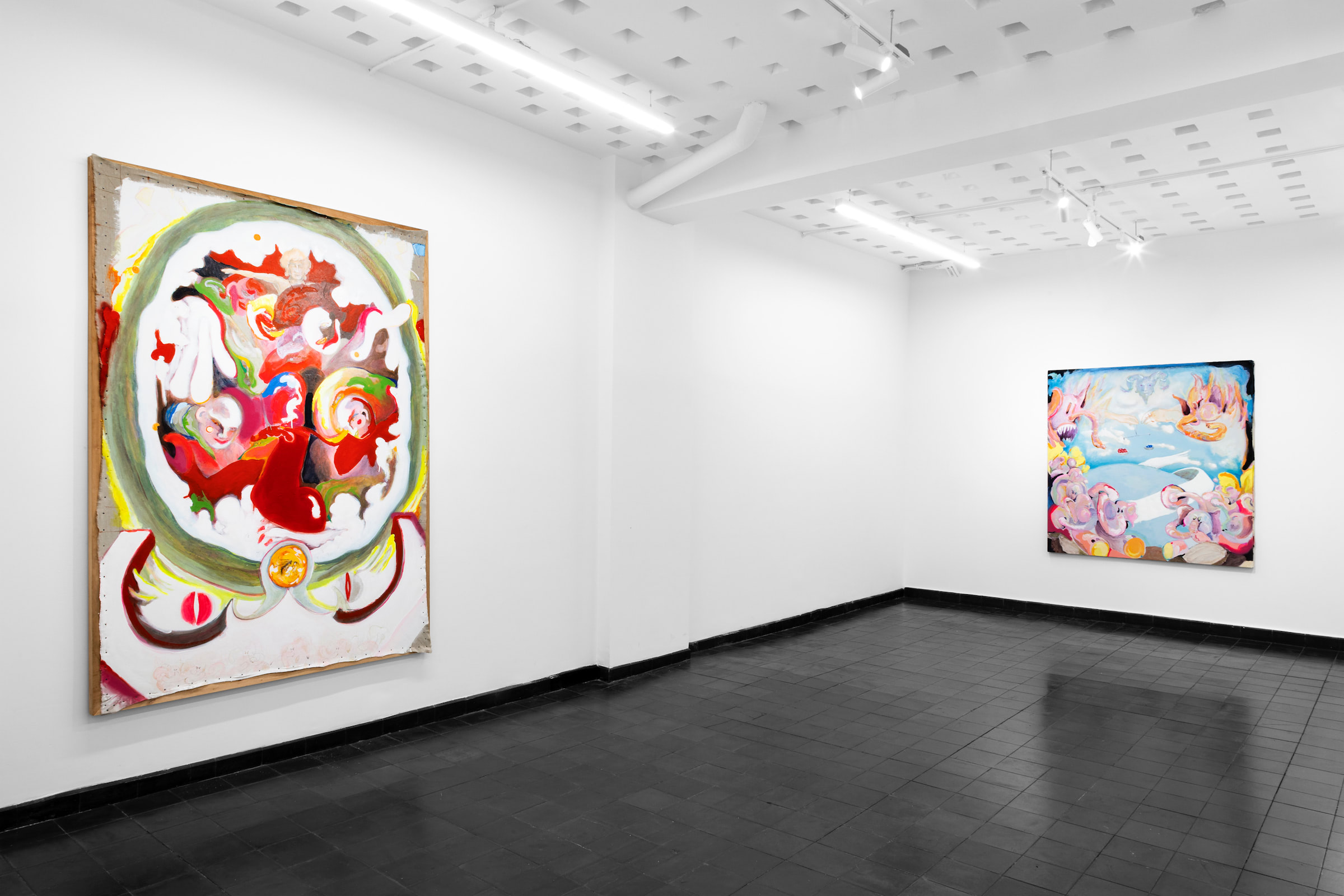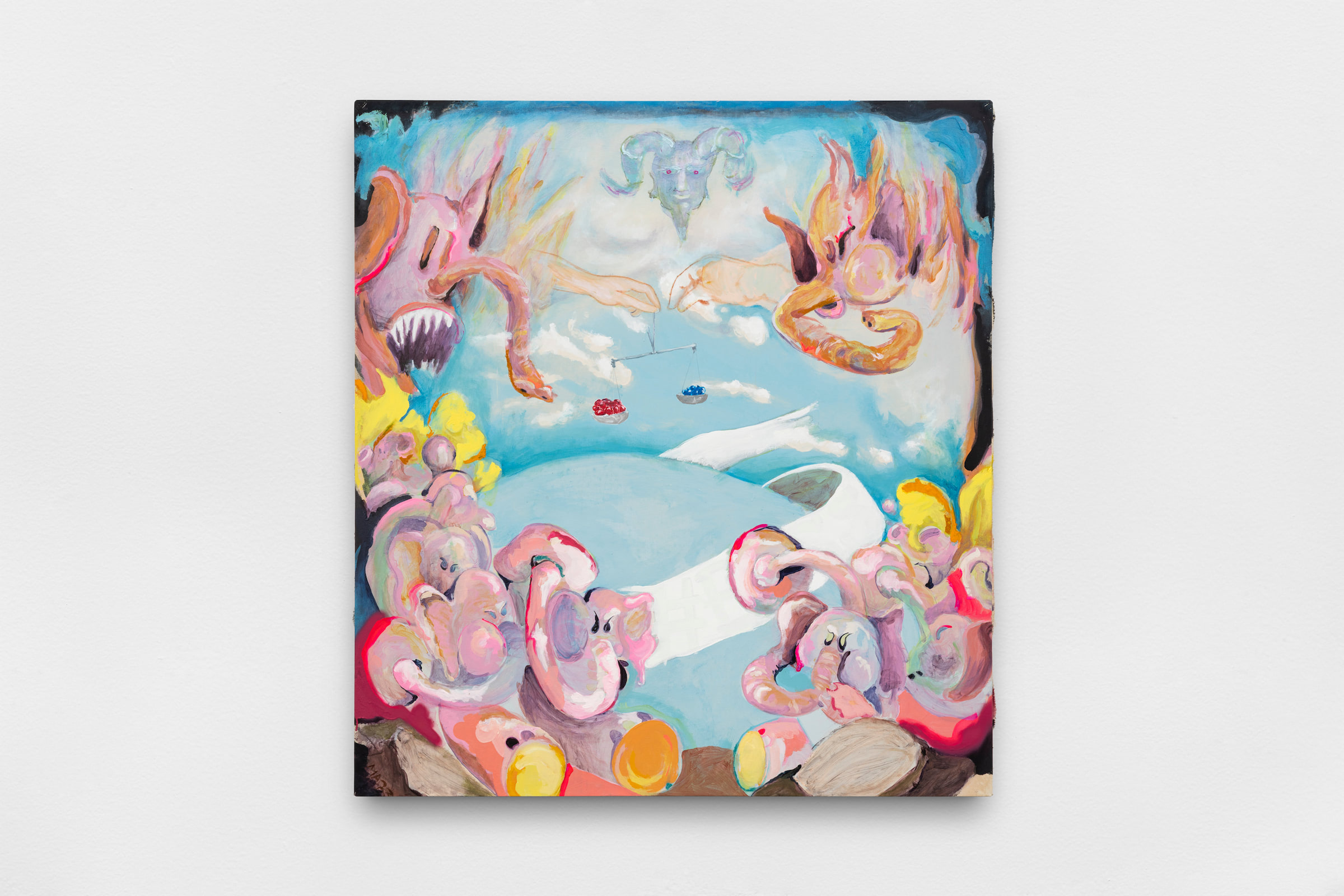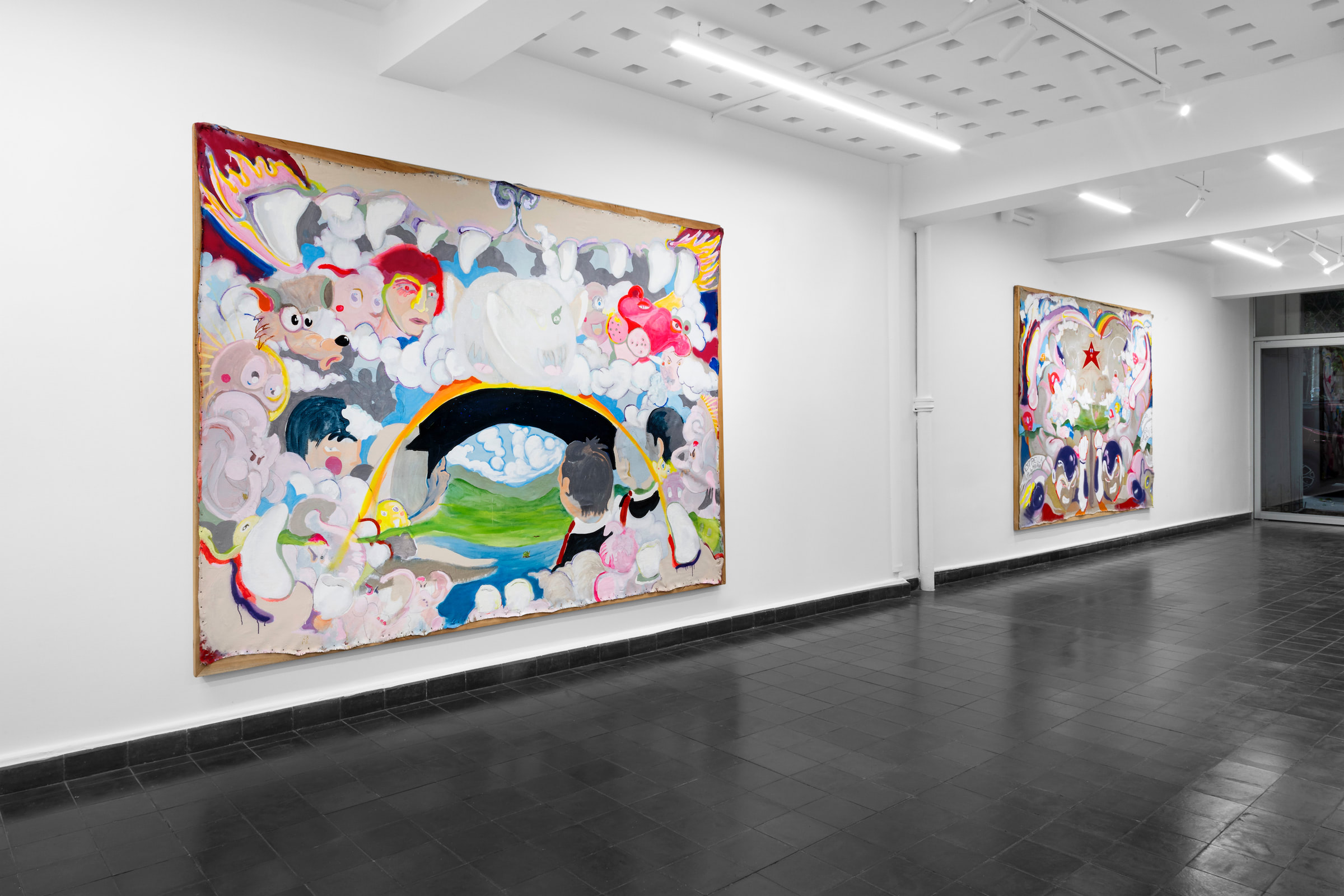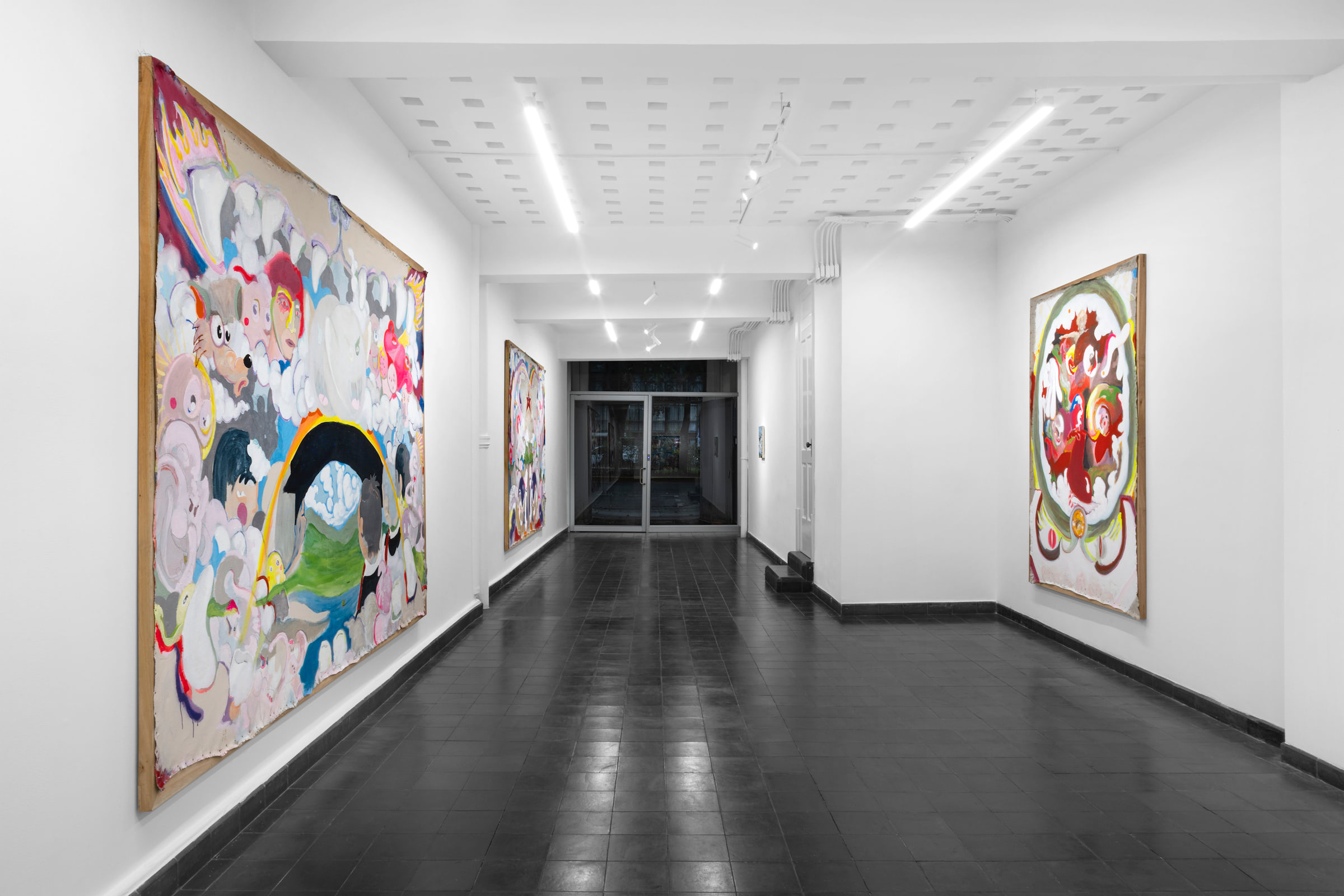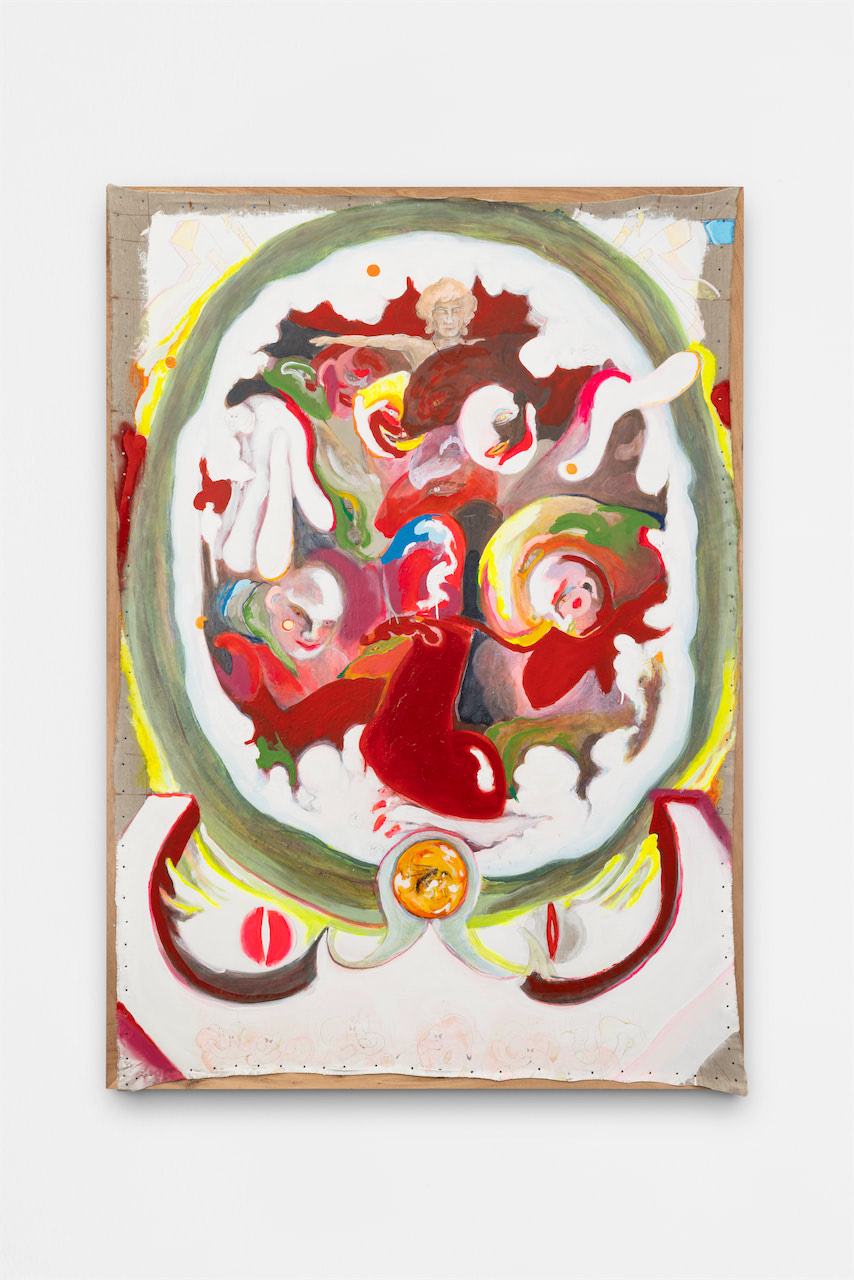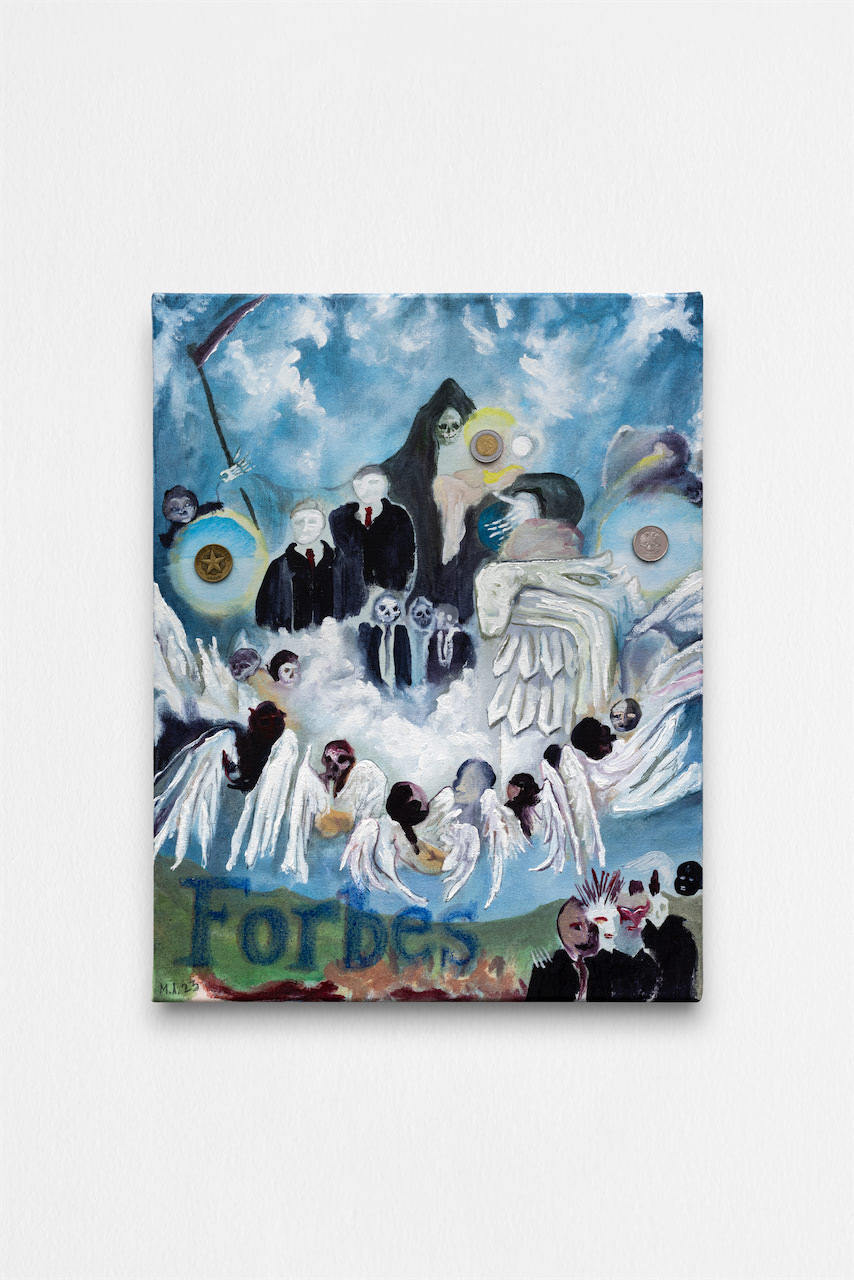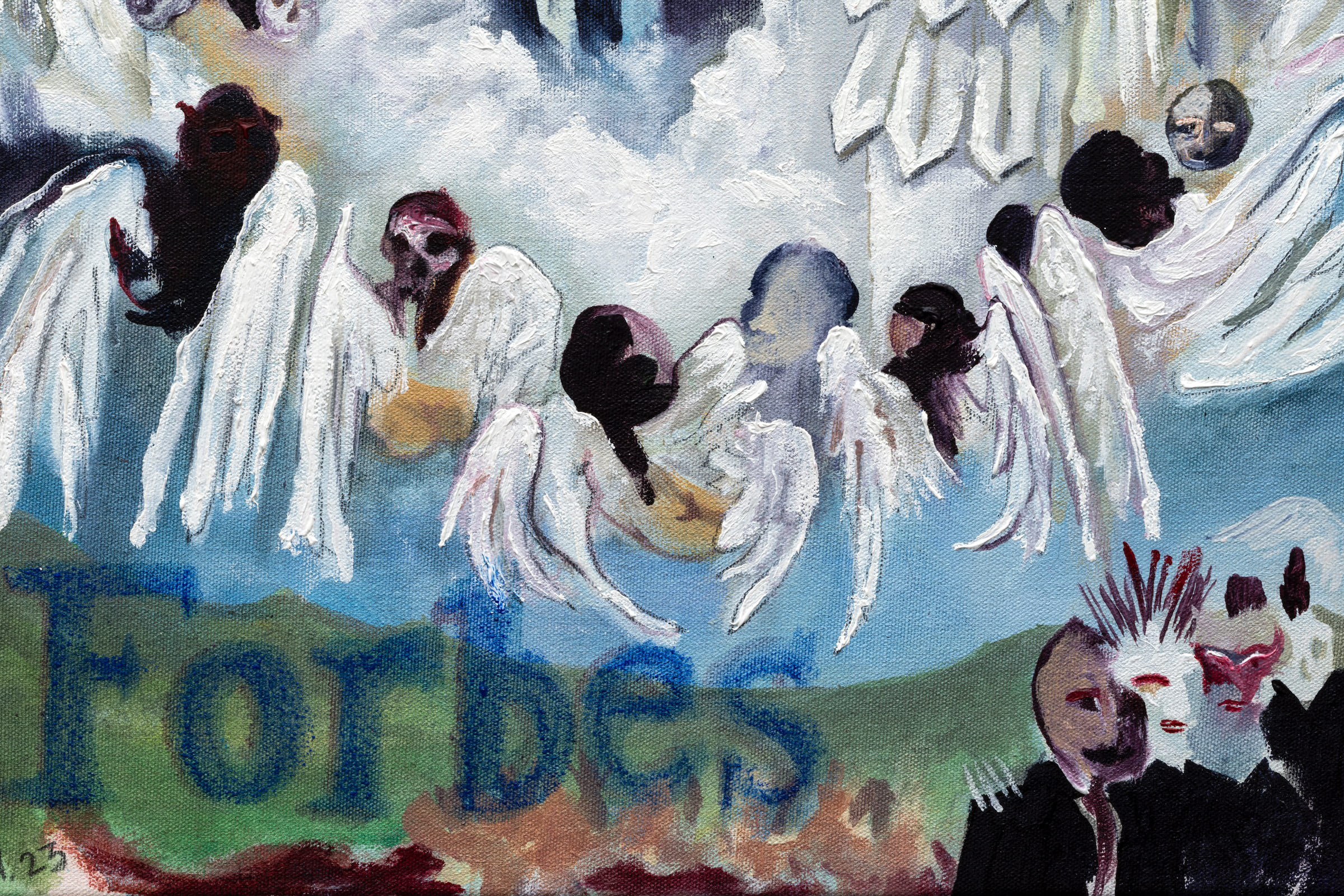Seis, seis, seis.
July 19th - August 19th, 2023
Gaga, Mexico City
Seis, seis, seis.
Hace apenas unos cuantos meses, el 23 de marzo para ser más precisos, Plutón ingresó en el signo de Acuario. Y aunque ahora, retrógrado, Plutón ha vuelto a Capricornio, pronto volverá a Acuario para permanecer allí durante veinte años. Esto puede traducirse como el infierno (Plutón, Hades) en el cielo (Acuario, el copero de los dioses, el aire y la altura, el éter). Y esto es lo que vi, como si de una carta astral se tratara, en los lienzos de Marco Aviña que componen esta exposición. El inframundo ascendiendo a la bóveda celeste.
¿Astrología? Quizá. Puesto que una constelación supone mirar el cielo pictóricamente: trazar con estrellas la imagen de un mito. Y Aviña, que ha visto el final de las imágenes, esboza constelaciones desde una visión escatológica: Seis, seis, seis, el número de la bestia que le da título, es una clara referencia al Apocalipsis de San Juan, a la vez que un guiño rockero.
Acuario, el aguador, es Ganimedes: el copero de los dioses. El bello joven que ascendió a los cielos raptado por el águila de Zeus y luego transformado en constelación. ¿Podría Jim Morrison, esa estrella, ese bello joven arrebatado por los dioses en la flor de la edad, ser un nuevo Ganimedes? Morrison es el Rey Lagarto, y por lo tanto una deidad ctónica. Un anticristo. Su ascenso a los cielos sólo puede entenderse como parte del asalto vandálico de los dioses infernales: el retorno de Luzbel, la venganza de la imagen sobre el dios de lo irrepresentable, la victoria del becerro de oro, la instauración celeste del reino de Satán cuyo rostro triunfal ya se grafitea entre las nubes.
Quizá prefiera yo esta versión del Juicio Final, pues quizá no haya más alta justicia que la del gozo de ser y sobre estos lienzos celestes, estrellados y nubosos, que tradicionalmente suelen ser escenarios de alta teología, imágenes de toda suerte de procedencia, ya académica, ya popular, liberadas de cualquier categoría moral y jerarquización estética, y sin mayor afán de trascendencia, se regocijan en la dicha de su propia aparición. Pues aunque hay cierta insistencia simbólica en su iconografía, y por momentos las figuras parecieran constelarse en alegorías, se trata de alegorías y símbolos mutantes, inestables, inciertos, fugaces. ¿Qué relación hay entre las pastillas rojas y azules de Matrix que aparecen en una de las pinturas con la matriz preñada de esa diosa de la Tierra que protagoniza otro lienzo? Como las nubes en el cielo en las que apenas uno cree reconocer un rostro cuando ya ese rostro se transforma en un paisaje y ese paisaje en un animal y ese animal ya es sólo una nube que el viento disipa y ya no hay nubes, sólo cielo, así sus posibles significados.
¿Pero si no es el infierno de las imágenes el que ha tomado por asalto el cielo sino el cielo el que ha caído? También es posible mirar las estrellas en un charco y los antiguos nahuas llamaban cielos de abajo a los estratos del inframundo. ¿Anábasis o catábasis? "Como es arriba es abajo", reza un viejo dicho hermético y estos lienzos poseen cierta cualidad de espejo e incluyen su propio revés y son su propio doble. "Caer fue solo / la ascensión a lo hondo", dice José Ángel Valente en un poema sobre Ícaro.
El vértigo que generan estas pinturas radica en que, no sólo su fugitivo significado, sino sus figuras mismas orbitan en torno a su disolución. Las imágenes (pero más que imágenes, quizá deberíamos decir recuerdos de imágenes) aparecen sólo para vaticinar su desaparición inminente y su conversión en nubes. Los colores estridentes se revelan gradaciones hacia el terrible blanco final que insiste en las nubes que coronan o enmarcan sus fugaces epifanías. Lo que está ya no está. Como las estrellas en el cielo cuyo pasado es la luz de nuestro presente. No hay futuro pero el pasado está por venir a vengarse. Astrología postpunk. La estrella de Mario Bros lleva el halo de los muertos: Game Over. "This is the end, beautiful friend", canta el Rey Lagarto. Pero el disco gira. Y en su loop la canción vuelve a comenzar.
Luis Felipe Fabre, Ciudad de México, 19 de julio del 2023
~
Seis, seis, seis.
Just a few months ago, on March 23 to be more precise, Pluto entered the sign of Aquarius. And although now, retrograde, Pluto has returned to Capricorn, it will soon return to Aquarius to remain there for twenty years. This can be translated as hell (Pluto, Hades) in heaven (Aquarius, the cupbearer of the gods, air and the heavens, the ether). And this is what I saw, as if in an astral chart, in Marco Aviña's canvases composing this exhibition. The underworld ascending to the celestial vault.
Astrology? Perhaps. Since a constellation means looking at the sky pictorially: tracing with stars the image of a myth. And Aviña, who has seen the end of the images, sketches constellations from an eschatological vision: Six, six, six, the number of the beast that gives it its title, is a clear reference to the Apocalypse of St. John, as well as a rock ‘n’roll wink.
Aquarius, the water carrier, is Ganymede: the cupbearer of the gods. The beautiful young man who ascended to the heavens abducted by the eagle of Zeus and then transformed into a constellation. Could Jim Morrison, that star, that beautiful young man snatched by the gods in the prime of his life, be a new Ganymede? Morrison is the Lizard King, and therefore a chthonic deity. An antichrist. His ascent to the heavens can only be understood as part of the vandalic assault of the infernal gods: the return of Luzbel, the vengeance of the image on the god which cannot be portrayed, the victory of the golden calf, the celestial establishment of the kingdom of Satan whose triumphal face is already graffitied among the clouds.
Perhaps I prefer this version of the Last Judgment, maybe there is no higher justice than the joy of being and on these celestial, starry and cloudy canvases, which traditionally tend to be scenarios of high theology, images of all kinds of origin, whether academic or popular, freed from any moral category and aesthetic hierarchy, and with no major desire for transcendence, rejoice in the delight of their own appearance. Although there is a certain symbolic insistence in his iconography, and at times the figures seem to be constellated in allegories, they are allegories and mutant symbols, unstable, uncertain, fleeting. What relation is there between the red and blue pills of the Matrix that appear in one of the paintings with the pregnant womb of that goddess of the Earth that stars in another canvas? Like the clouds in the sky in which one barely thinks one recognizes a face when that face is already transformed into a landscape and that landscape into an animal and that animal is already only a cloud that the wind dissipates and there are no more clouds, only sky, thus its possible meanings.
But what if it is not the hell of images that has taken heaven by storm but the sky itself that has fallen? It is also possible to look at the stars in a puddle, and the ancient Nahuas called the strata of the underworld the heavens below. Anabasis or catabasis? "As above so below," goes an old hermetic saying, and these canvases possess a certain mirror-like quality and include their own verso and are their own double. "Falling was only / the ascent to the deep," says José Ángel Valente in a poem about Icarus.
The vertigo generated by these paintings lies in the fact that not only their fugitive meaning, but their figures themselves orbit around their dissolution. The images (but more than images, perhaps we should say memories of images) appear only to foretell their imminent disappearance and their transformation into clouds. The strident colors reveal themselves gradations towards the terrible final white that insists on the clouds that crown or frame its fleeting epiphanies. What is there is no longer there. Like the stars in the sky whose past is the light of our present. There is no future but the past is about to come to take vengeance. Postpunk astrology. The Mario Bros star wears the halo of the dead: Game Over. "This is the end, beautiful friend," sings the Lizard King. But the record spins. And in its loop the song begins again.
Luis Felipe Fabre, Mexico City, July 19th, 2023

